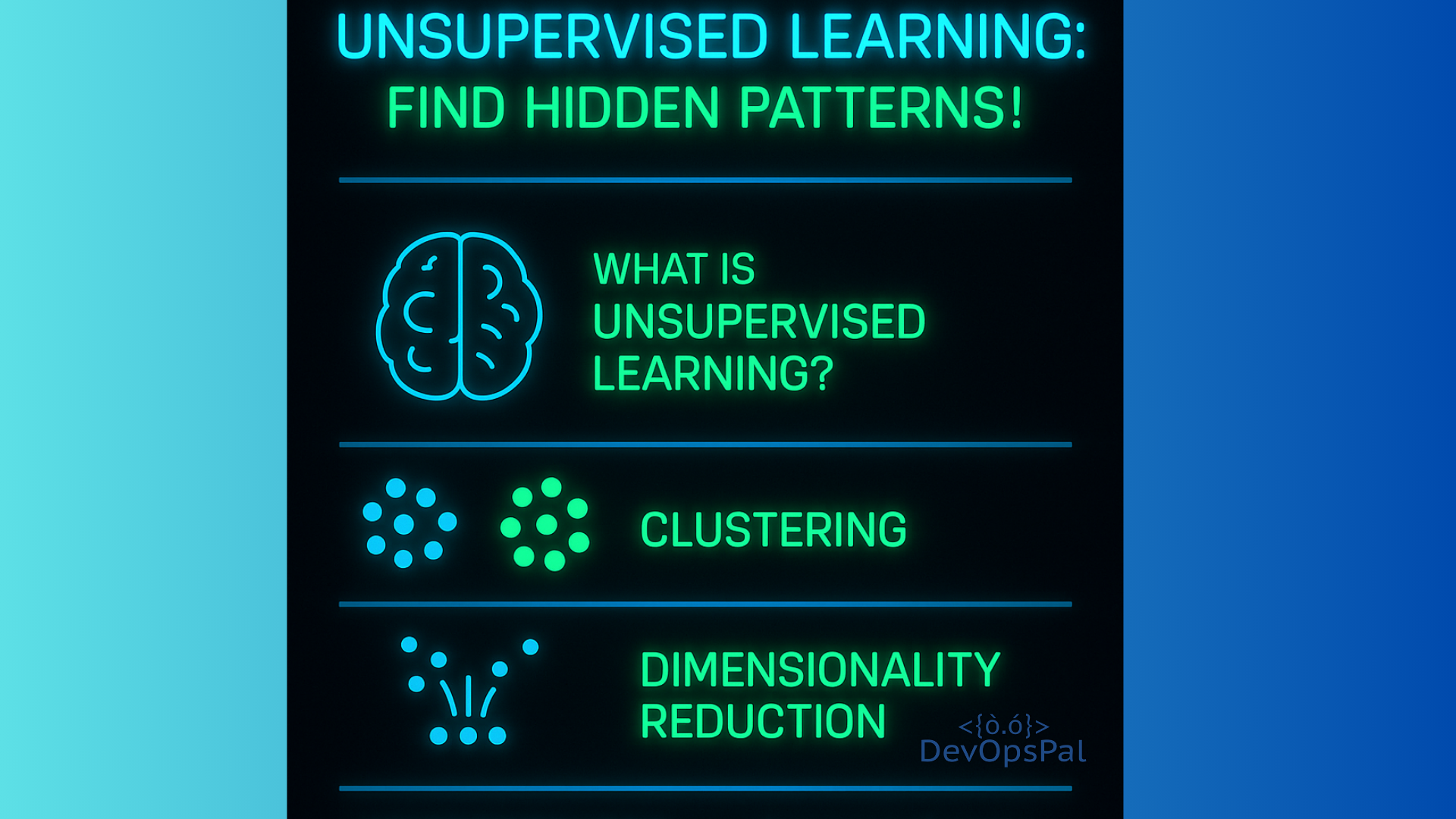Introduction:
Welcome back to the AI Learning Journey! We’ve explored supervised learning, where we train models on labeled data. Now, let’s dive into unsupervised learning—a powerful technique for discovering hidden patterns and structures in unlabeled data.
What is Unsupervised Learning?
Unsupervised learning is a type of machine learning where you train a model on a dataset that does not contain any labels. The goal is to learn the underlying structure of the data, such as clusters, associations, or anomalies.
Types of Unsupervised Learning:
- Clustering: Grouping similar data points together.
- Algorithms: K-Means, Hierarchical Clustering, DBSCAN.
- Dimensionality Reduction: Reducing the number of variables in a dataset while preserving its essential information.
- Algorithms: Principal Component Analysis (PCA), t-distributed Stochastic Neighbor Embedding (t-SNE).
- Anomaly Detection: Identifying data points that are significantly different from the rest of the data.
- Algorithms: Isolation Forest, One-Class SVM.
Building Your First Unsupervised Learning Model (Clustering):
1. Dataset:
Use the Iris dataset (we’ll ignore the labels for this example).
2. Import Libraries:
from sklearn.cluster import KMeans
from sklearn.preprocessing import StandardScaler
import pandas as pd
import matplotlib.pyplot as plt3. Load and Prepare Data:
data = pd.read_csv('iris.csv') # Replace with your path
X = data.drop('species', axis=1) # Drop the labels4. Scale the Data:
scaler = StandardScaler() X = scaler.fit_transform(X)5. Train the Model (K-Means):
kmeans = KMeans(n_clusters=3, random_state=42) # Assuming 3 clusters kmeans.fit(X)6. Visualize the Clusters:
labels = kmeans.labels_ plt.scatter(X[:, 0], X[:, 1], c=labels) plt.xlabel('Feature 1') plt.ylabel('Feature 2') plt.title('K-Means Clustering') plt.show()Key Concepts:
- Clusters: Groups of similar data points.
- Centroids: The center of each cluster.
- Dimensionality Reduction: Reducing the number of variables while preserving information.
- Anomalies: Data points that are significantly different from the rest.
Next Steps:
- Experiment with different unsupervised learning algorithms.
- Try different datasets and features.
- Learn about evaluation metrics for clustering (Silhouette score, Davies-Bouldin index).
- Share your progress and questions using #AIZeroToHero.
Conclusion:
You’ve now explored unsupervised learning and built your first clustering model. This is another important step in your AI learning journey. In the next post, we’ll dive into neural networks and deep learning.

